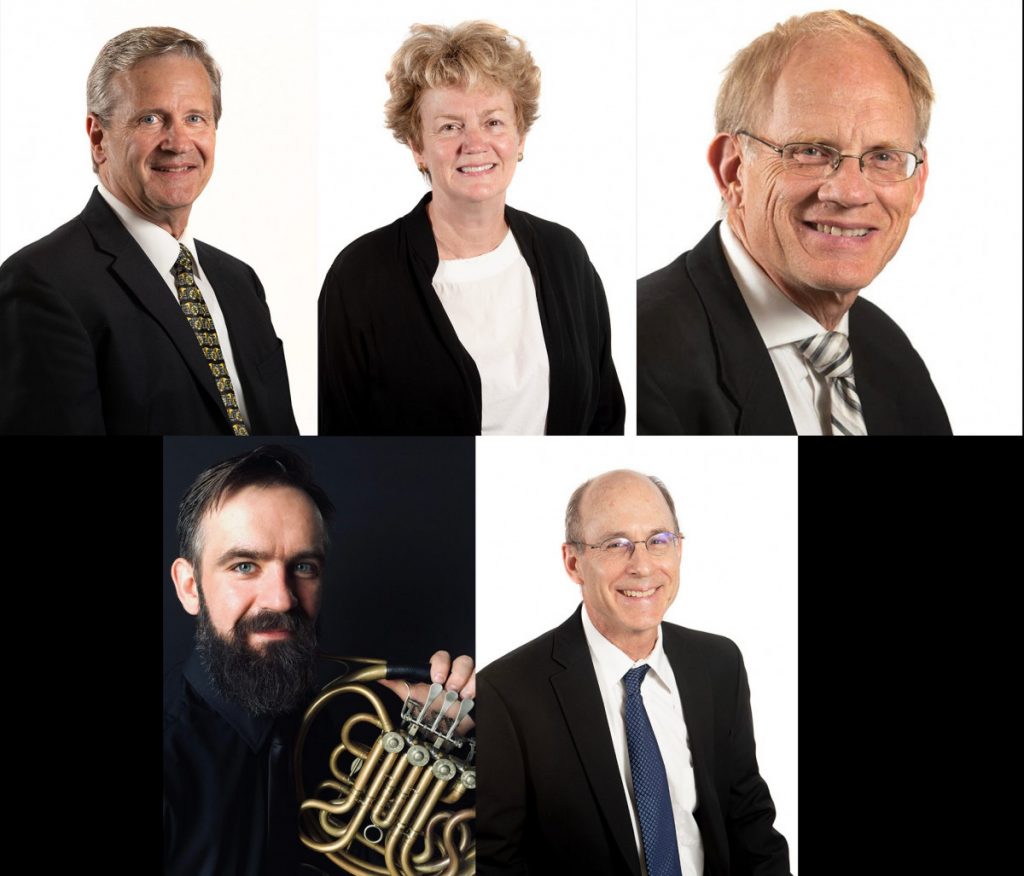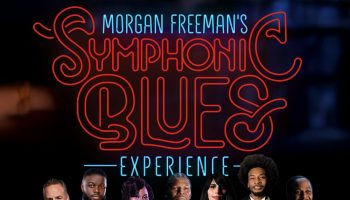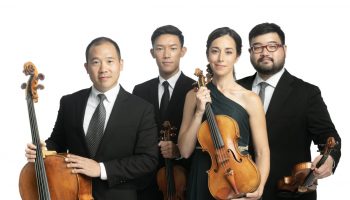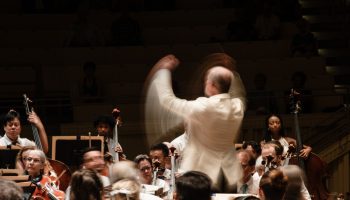
Gabriel Weber
Staff Writer
To close out the School of Music Faculty Spotlight Series, the faculty is having a Hornapalooza — a recital featuring solely French horns that Roger Kaza said is the only recital like it that he knows of at Chautauqua.
At 4:15 p.m. today in Elizabeth S. Lenna Hall, all five members of the French horn section of the Chautauqua Symphony Orchestra, along with the five students comprising the Music School Festival Orchestra horn section — Amir Sharpov, Lilah Constanzo, Louis Roy, Jordan Petan and Christina Vieytez — will play an expansive program that will showcase some bombastic sound.
They’ll be playing Johannes Brahms’ Symphonic Fragments No. 2 from Symphony No. 1; two of Wolfgang Amadeus Mozart’s arias from The Magic Flute and his Turkish rondo; Franz Strauss’ “Three Quartet Movements;” Jean Sibelius’ “Solitude” from “Belshazzar’s Feast;” Lowell Shaw’s Quipperies No. 1; Pietro Mascagni’s “Intermezzo Sinfonico;” Gabriel Fauré’s “Pavane;” Jeff Scott’s “Fanfare for Ten Horns;” Franz Schubert’s “Nachtgesang im Walde;” and Ludwig van Beethoven’s “Scherzo” from Symphony No. 3, “Eroica.” There is also a surprise in the mix that the audience will have to discover upon attending.
Even as the program starts off fairly seriously with Brahms, Mozart lightens it up quickly. The Sibelius piece sounds almost like Radiohead, Kaza said, and Beethoven’s finale is the most virtuosic work in the program.
There are some pieces that will be instantly recognizable, and many have been rearranged for the horn specifically. Though many people may believe they have a grasp on the French horn’s range, its capabilities are far-reaching; some horn players in the group specialize in lower registers, and others higher registers.
“We can also explore the rich harmonies, work on our intonation and just revel in music that wasn’t necessarily written for us. It’s a bit self-indulgent, but you know, that’s par for the course,” said Kaza, principal horn of the CSO. “It’s very rewarding to play these pieces that were written for voices or other instruments that the composer thought were ideal, but maybe it didn’t necessarily have to be the only way to play that music.”
The five hornists of the CSO — Kaza, Bill Bernatis, Donna Dolson, Daniel Kerdelewicz and Mark Robbins — have the longest tenure of all the sections in the orchestra, according to Kaza. Four artists go back to 2000, and two go back to 1980, which makes for meandering rehearsals.
“We all just have fun together. That’s the main thing,” Kaza said. “A typical rehearsal involves some rehearsing, but involves long storytelling. ‘Remember when this happened? Remember when that happened?’ It is nice to have such a long history.”
While rehearsal is enjoyable, the CSO’s compact schedule makes for difficulties. The horn players were able to squeeze in five total rehearsals for today’s recital, and although it is down to the wire as usual, that’s a part of what makes it fun, Kaza said.
As there are a few pieces that feature the full power of all 10 horn players, the scope of what is possible will expand greatly throughout the recital.
“We’re moving in a general direction from a smaller group to a larger group. So it’s just interesting all the different sonorities you can get out of the horn, because the horn has such a wide range; it’s got a four-octave range,” Kaza said. “It’s really able to cover an incredible amount of repertoire if it’s arranged properly.”
All horn enthusiasts are cordially invited to make themselves known after the concert.
“Come with open ears, and come say hi afterwards,” Kaza said, “because we love meeting horn fans.”




